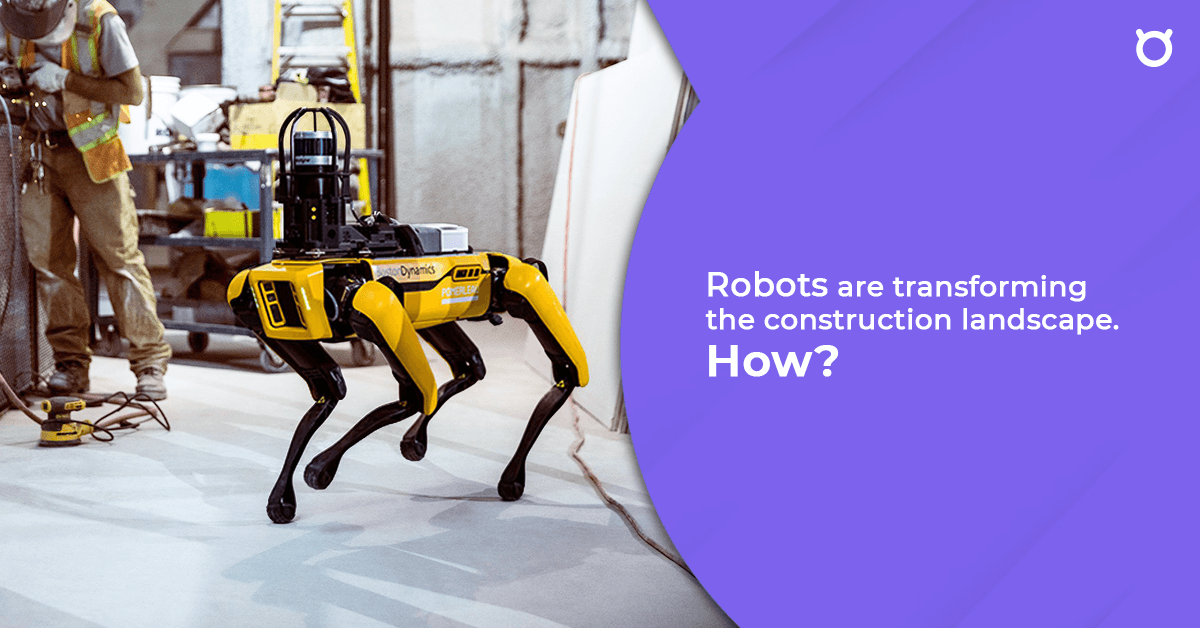Construction is one of the most rapidly growing industries in the world. Despite the amount of manual labor involved in construction, the industry has long been one of the least digitized sectors. This has now changed with automation and robotics creating value, generating revenue, and fast-tracking growth for several construction businesses.
Automation as a tool has made it easier for businesses of all genres to optimize efficiency, speed, and the cost involved in production. With the growing demand for safe practices in construction organizations, the need for better avenues for operational efficiency is also growing. The entry of robots into this sphere has truly transformed several core functions in construction. This blog will take a look at how robots are modifying the topography of the industry.
Advantages of robotics in construction
Introducing robotics into the construction equation can create several opportunities for businesses in this sector to blossom. From creating a safe environment for workers to improving the overall efficiency of the endeavor, here are some advantages of robotics in the construction industry:
- Solve the skill shortage problem: Construction is a core business venture that requires employees with a specific skill set. Furthermore, the labor-intensive aspect of the industry doesn’t always make it a favorable choice for new graduates. In this context, finding skilled labor with a particular set of talents and skills can often be tiresome. Incorporating robotics technologies to take over manual labor-dependent tasks can quickly solve the skill shortage problem. In addition, it can also significantly contribute to improving productivity and efficiency on-site.
- Transition to off-site production: Modular construction is the most popular and imminent trend in the coming years. The shift from building modules on-site to producing individual or modular components off-site has allowed leeway for automation and robotics in construction to participate in the upcoming revolution. While the change will be a slow transition, a step forward in that direction can help save money, personnel, and time. Statistically (report by McKinsey), about 20% of new building construction will become modular by 2030. For construction businesses to adapt to this volatility quickly, robotics technologies must make an appearance in the industry sooner than later.
- Safer work environments: A safe work environment, especially in an industry like construction where machinery and manual labor are extensive, is the need of the hour. Robotics technologies and robots can help render construction sites safer to work in. The issue is not just keeping employees injury-free but also eliminating the significant costs involved with an unsafe site. Dangerous tasks such as demolition, drilling, earth-moving, excavation, etc., can be assigned to robots on-site to help create a safe work environment and channel personnel to more critical, decision-based tasks. With the likes of SLAM navigation solutions coming as part of the package with robots, the idea of including robotic machines into the mix is looking more plausible.
- Efficient sites will reap better fruits: The entry of robots into the construction landscape has not been an overnight decision. To help this industry outgrow its potential, several businesses worldwide have experimented with robots as a part of the workforce. Starting from bricklaying to welding, robots have completed several construction-related tasks successfully. A great example of a robot that can perform repetitive tasks with high degrees of success is the Hadrian X, used for bricklaying.
Incorporating automation and robotics into any industry is often considered an omen – lesser jobs, more capital investment, and the likes being the hurdle. However, the inclusion of robotics does quite the opposite. As per a report by McKinsey, construction will have at least 200 million more jobs to its credit by 2030; and the demand for skilled personnel will be more than the supply. In this context, robotics and automation can act as excellent alternatives, especially in the labor-intensive part of the business. Furthermore, the construction process will inherently become faster and more efficient, with the opportunity for little to no error.
Are you wondering how our robots can transform your construction business into a smart one? You can write to us at hello@provenrobotics.ai to know more!




